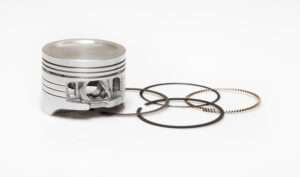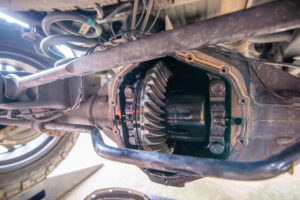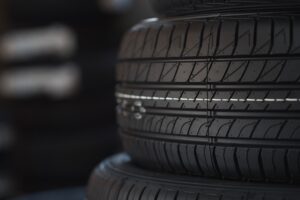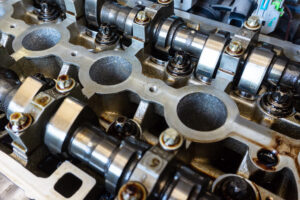8 Tools Crucial For Engine Building
Engine building for the street or the strip, is going to be a similar process. Everything is based on measurements, and engine builders live and die on thousandths of an inch. Understanding which tools provide you the most benefits is essential.
Team Summit NHRA Funny Car driver Tim Wilkerson and Frankie Forman from Engine Power are here to discuss what tools can help you accomplish precision for your project in their most recent Tech Tips video.
Torque Wrenches
The right torque wrench is a crucial part of the assembly process. It’s used where the tightening of bolts and screws is vital. It allows an operator to set the torque applied to the fastener so that it’s matched the specifications of a particular application.
Torque wrenches have come a long way and some boast sophisticated digital gauges that allow for precision. The right torque wrench is a crucial part of the assembly process. Whether it’s Pound-Feet or Pound-Inch measurements, modern torque wrenches are up to the task. There are various models that will meet your demanding needs and get the job done right.
Micrometer
Micrometers are sensitive tools designed to make accurate measurements of linear dimensions. It’s considered one of the most essential measurement instruments ever designed. This tool is necessary to ensure everything fits perfectly in your engine prior to installation.
If you’re in the process of building an engine, it’s imperative to own a micrometer. Not only can it help save you time, but it’ll save you money in the long-run to ensure the parts you’ve chosen are a perfect fit for the application.
Dial Indicator
A dial indicator is another useful tool you should have in your garage. Dial indicators can be used on both the crankshaft and camshaft to check endplay, the run-out of a crank to assure the concentricity, or check run-out on your disk brake rotors. No matter the application, it’s a tool that you’ll use over and over again.
A dial indicator from the industry’s top toolmakers will make a perfect addition to your kit and ensure precision each time.
Dial Bore Gauge
If you want to get the job done right the first time, adding a dial bore gauge to your tool collection is a must. This tool allows you to accurately measure the inside diameters of the main bearings and the connecting rod. Spending the extra money on a gauge with a range of two to six inches and with graduations accurate to 0.0001-inch will be worth it in the long run.
Piston Ring Compressor
A piston ring compressor is a unique tool designed to compress piston rings when pistons are re-installed. This is done by opening the piston ring compressor far enough to allow the piston to slide into the opening.
Some compressors are adjustable, allowing you to fit pistons of multiple sizes. However, others are bore size-specific. No matter the type of engine build you’re planning on, the right piston ring compressor is available to you.
Feeler Gauges
You might be starting to sense a theme here, but accuracy is the name of the game when it comes to building the perfect engine. It’s crucial to ensure an accurate measurement for smooth performance and avoid faulty operations. Usually, you would be using a micrometer and dial bore gauge to measure piston to wall clearance. Feelers are most commonly used to check ring end gap and valve lash.
Feeler gauges are handy tools that can be used anywhere from guitars to engines. The gauges are constructed with tempered steel blades and range in various sizes. They can be stacked to achieve increased gap measurements, and each blade has its sizes laser-etched for easy identification. They are designed with a thumb notch for easy use and selection.
Spring Pressure Gauge
Improper valve spring installation is a common reason for engine failure, and having a tool like a spring pressure gauge will allow you to ensure the job is done properly. If you want some peace of mind when working with your engine, you should use a spring pressure gauge to ensure your loads are within ten percent of each other.
Spring Installed Height Tool
Valve spring height micrometers are inserted over the valve, between the retainer and spring seat like they were springs. These allow for a quick and accurate measurement of crucial valve spring heights. Using this high-quality tool will ensure that you get the job done right each time and save you time and effort.









